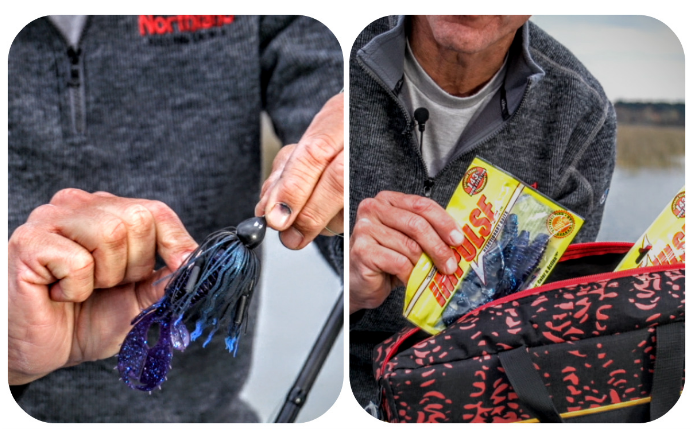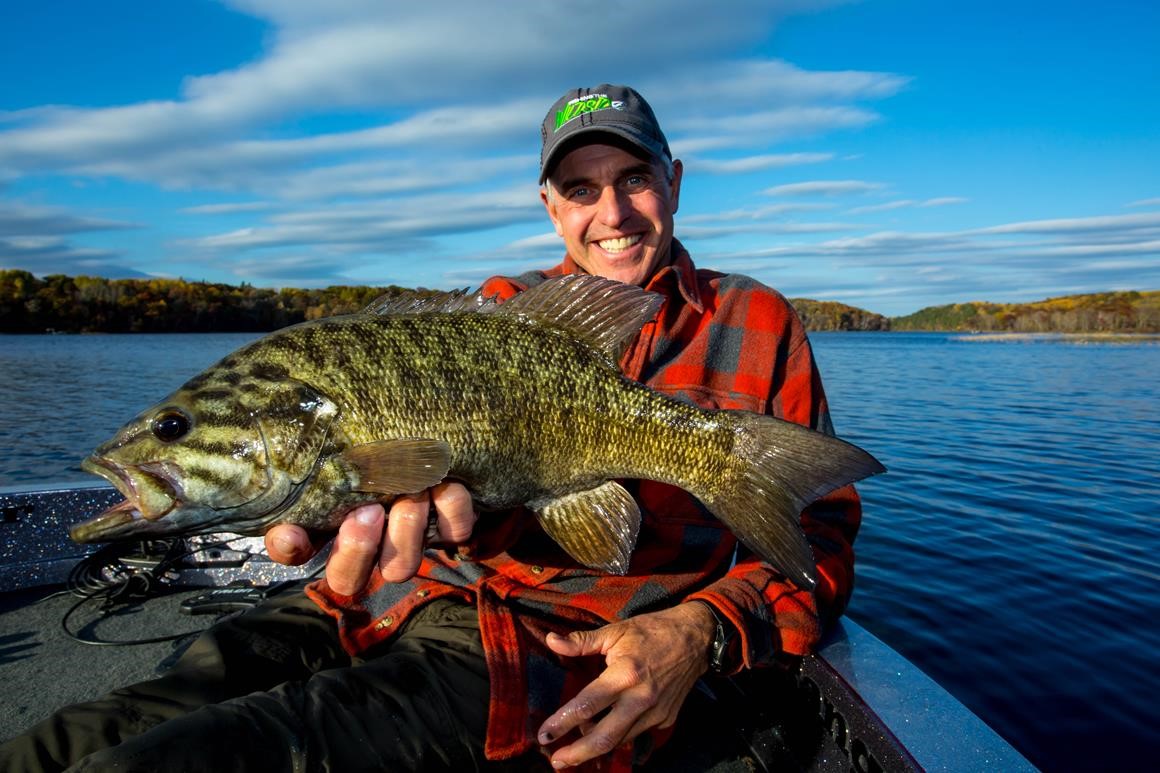It’s early October and water temperatures have dropped down below the 60-degree mark in the lakes we fish here in the Upper Midwest if you want to catch fall largemouth! If you like to catch big largemouth bass and you’re wondering where to find them this time of year, I would recommend perusing the bulrushes. That is where many big largemouths call home right now.
One thing that’s always extremely important to think about no matter when you’re fishing is “FOOD”, and there is no shortage of it in the bulrushes right now. As things cool off, perch run up into the shallows to join the crayfish that are already up in the rushes. This is the perfect recipe for hungry bass, as their appetites continue to grow with the water temperatures dropping.
If you’ve never targeted largemouth in bulrushes before, it can be a little bit intimidating. You might not know where to start your attack. They can be very large and sprawling on some bodies of water. Some areas are thick and fairly dense, while others are relatively thin and loose. I tend to prefer areas that are a little bit thicker because they can create an “edge” for the bass to relate to. On days when it’s windy, you will often find bass sitting on the up-wind side of the rushes, waiting for food to be pushed their way.
When you’re fishing the rushes, don’t make long, Hail Mary casts deep into the middle of the bed. The most aggressive fish are going to set up along the outside edges, so that’s where you should be focusing your efforts. Look for irregularities in the cover, whether that’s thick areas in the bulrushes or isolated rush patches. Slowly flip out your jig and let it sink down and settle on the bottom. Let it sit there a moment to see if a bass is willing to take a bite. If it doesn’t, slowly lift your jig up, then drop it down again. If you don’t get a bite, reel up and flip to a different location. It’s a pretty straightforward tactic.
A simple skirted flipping jig tipped with a big, bulky plastic body is the most effective bait combo in this situation. I’ll run heavier jigs when the wind is really blowing or when I’m fishing really thick bulrushes. My jig box is filled with skirted jigs that range from small 1/4 oz jigs all the way up to big 1 oz jigs. Most of the time, I’ll fish something right in-between there. I like using big plastics for this presentation because it creates a big impact as it comes crashing into the water and those bass are looking for that big meal this time of year.
It’s a fairly simple program, but it can be devastatingly effective for big bass in the fall.




